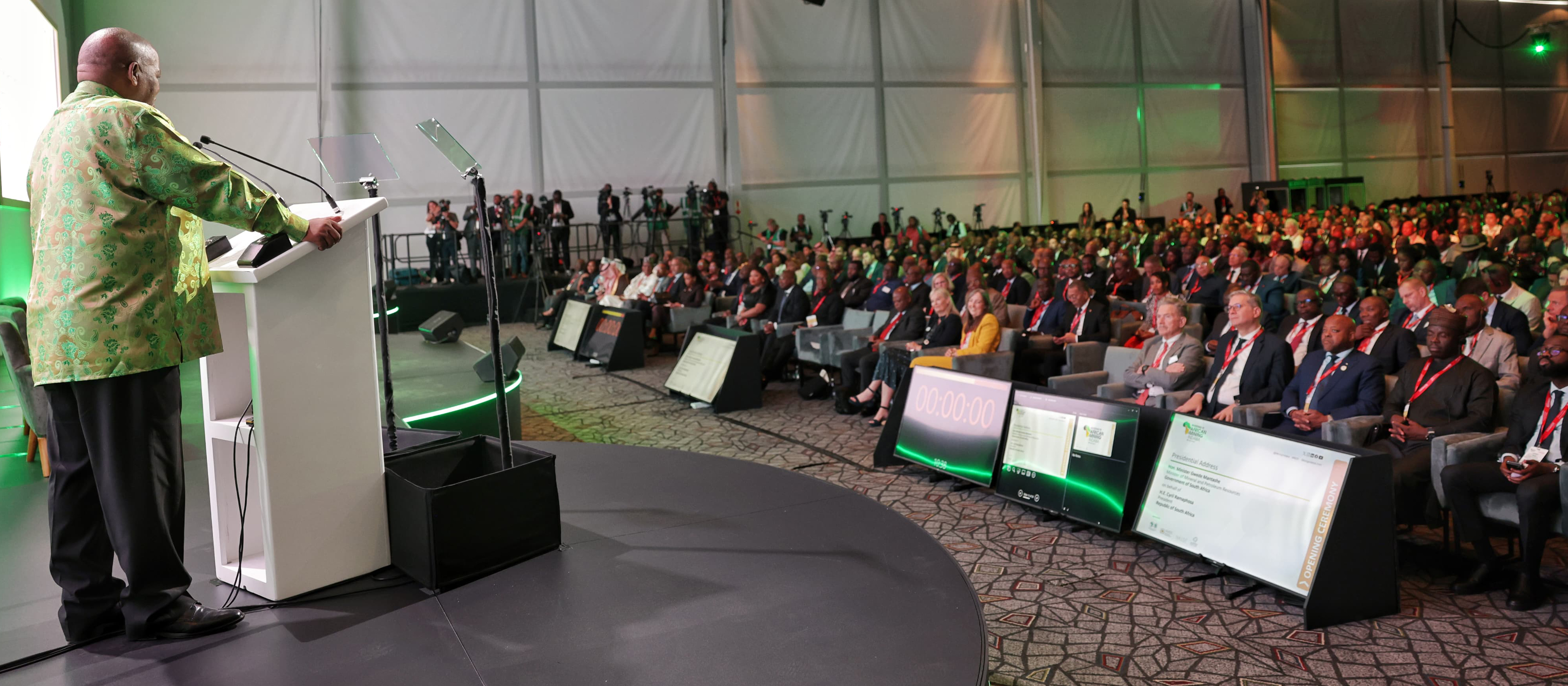A functional minerals cadastre to replace the useless Samrad system for processing South African mining applications is on track to go live by June, a development that should lift exploration activities and investment by shining the light of transparency through a murky haze.
Indeed, the Department of Mineral Resources and Energy (DMRE) - soon to be renamed the Department of Mineral and Petroleum Resources - even has a prototype model in its stand at the Investing African Mining Indaba in Cape Town.
Daily Maverick checked it out and this journalist was suitably impressed. To wit, the display screen at the stand shows the simple steps that need to be made to apply for a prospecting or mining right or permit.
You register and then start your process by selecting the type of right or permit you are applying for, the spot on the map you are interested in and the kind of commodity in question. It all looks seamless and, hopefully, that will remain the case once it is up and running.
The mining sector has been lobbying for a functional cadastre for years and the stakes are sky-high.
A functional mining cadastral system is an online portal that displays a country’s mineral and other forms of natural wealth in a way that is accessible to the public. It serves the dual function of showing the state of play of mining activities while allowing companies armed with this knowledge to apply for various kinds of exploration or mining rights.
Read more: DMRE says cadastre on track, with 2,800 mining applications finally approved in 2023
“They are testing it [the cadastre] in the Northern Cape initially. It is being tested as we speak,” Hugo Pienaar, chief economist at the Minerals Council SA, told a media briefing at the Mining Indaba.
The choice of the Northern Cape is interesting as it is the province that is widely seen as the most unexplored with the best potential for significant finds, notably for copper and manganese.
The lack of a proper cadastre has long been a thorn in the side of the industry and is regarded as the main reason behind mounting backlogs for mining applications in South Africa.
This sorry state of affairs, in turn, is seen as a key obstacle to mining investment in South Africa, which now accounts for less than 1% of global exploration expenditure - a steep fall from over 5% two decades ago.
After years of needless delays, the DMRE in January of last year announced that the PGM Consortium - headed by Canada’s GeoTech Systems - had been selected to design and put in place a mining cadastre.
South Africa is light years behind neighbours such as Botswana on this front, but there is now light at the end of the tunnel.
The DMRE also in November on its website published an update on the progress being made in tackling the applications backlog and has committed to doing so on a quarterly basis.
Read more: Loaded for Bear: There are promising signs Mantashe’s DMPR is embracing mining transparency
This is all part of a drive to improve governance and attract investment, which has been given added impetus under the Government of National Unity.
Several South African mining CEOs who Daily Maverick spoke to at the Mining Indaba, including Harmony Gold’s Beyers Nel and Gold Fields’ Mike Fraser, all say they see the investment environment for South Africa’s mining sector improving.
This is a stark contrast to past indabas, when South Africa’s mounting challenges often took centre stage.
The progress on the cadastre has given a boost to this emerging confidence and, hopefully, it will be operational within a few months. DM
Business Maverick
SA’s mining cadastre is on track to shine the light of transparency after years of stumbling in the dark





